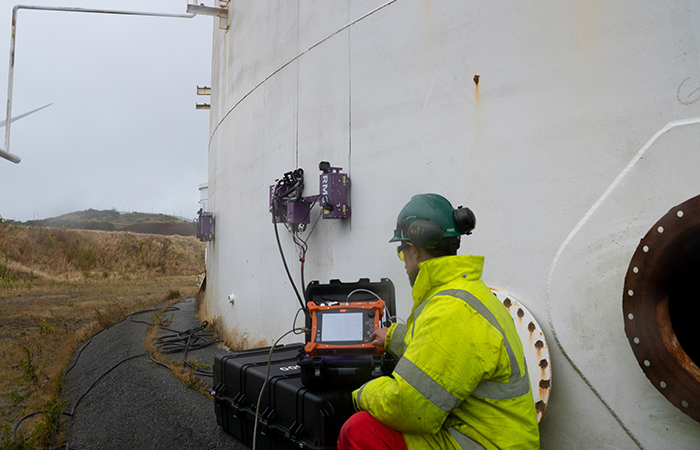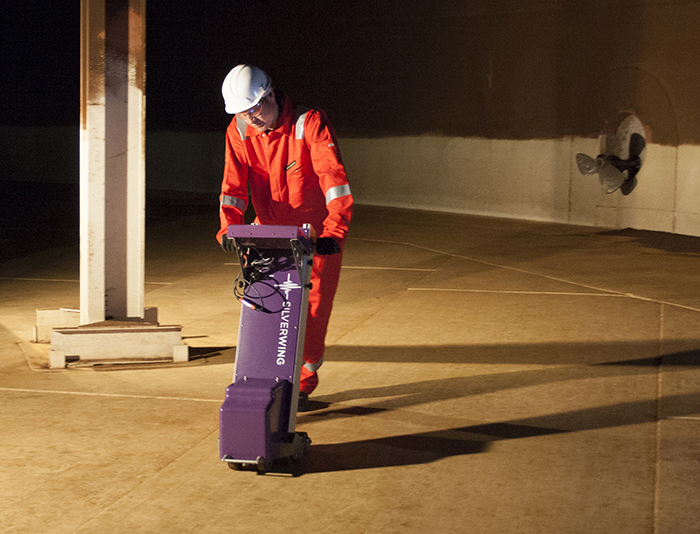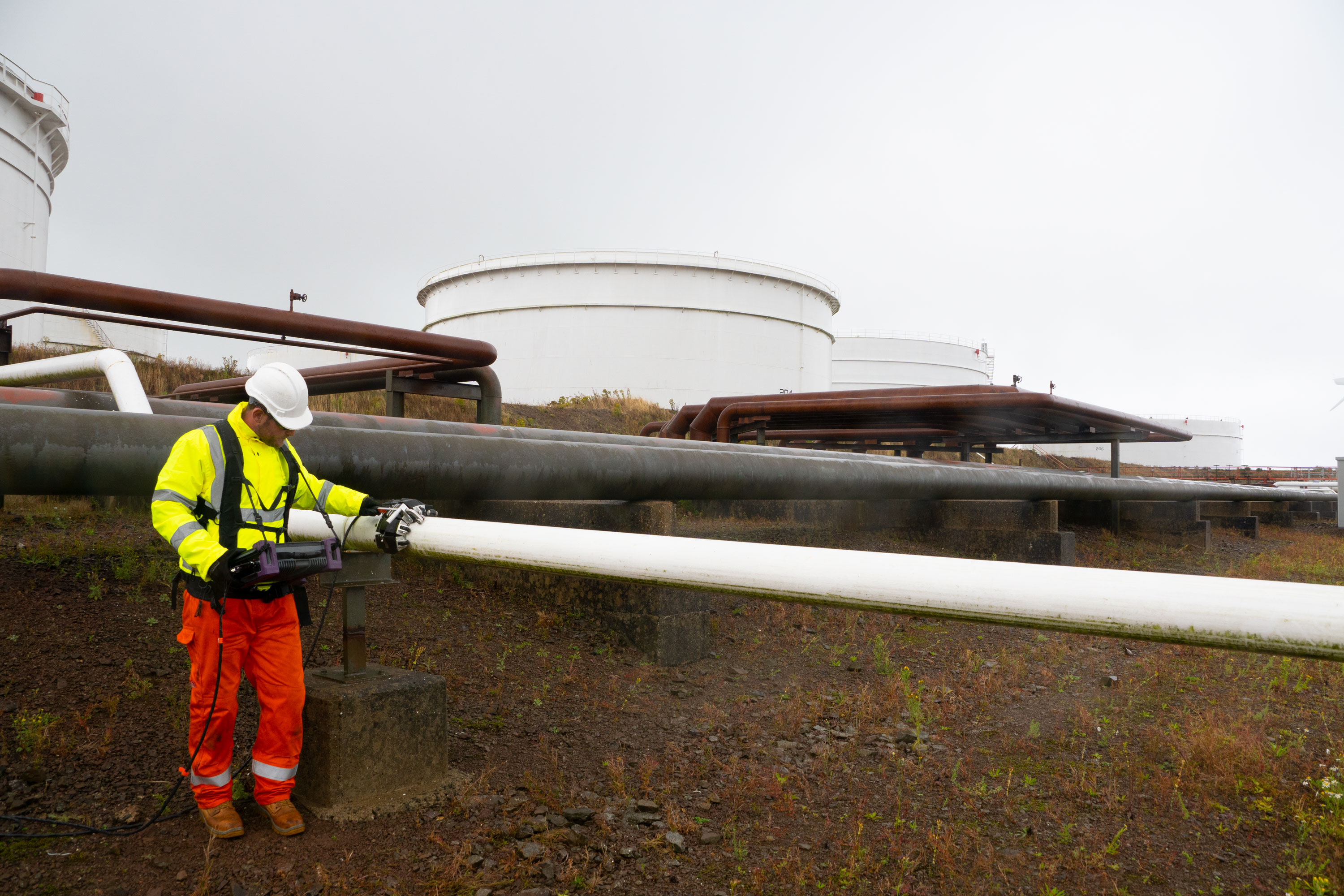Non-Destructive Testing for Bringing Tanks Back Online
Recommissioned Storage Tank Integrity
When the energy sector experiences a surplus of crude oil, the availability of storage facilities becomes critical. Under unique circumstances such as the extraordinary reduction in fuel consumption amid the COVID-19 crisis, industry looks to retired tank farms as a possible solution. When it comes to reinstating aboveground storage tanks (ASTs), tank integrity and inspection departments must adopt a robust program.
Details
ASTs require inspection at regular intervals to ensure deterioration is detected at an early stage. Effective inspection identifies the repairs required before the point where leakage or other failures occur, avoiding environmental contamination, product loss, or even catastrophic failure.

An inspection program is implemented for the volumetric inspection of tank construction welds directly after manufacturing the new storage tank. Throughout the life cycle of ASTs, degradation may occur due to environmental conditions such as weather and ground conditions or by the contents stored which may cause internal corrosion. It is often assumed that leakage will occur before a failure, highlighting thinned areas of shell. This, however, is not always the case and there are many instances where catastrophic failure occurred without any prior leakage. Inspection techniques and equipment should therefore be able to identify degradation and potential total failure, as well as the more likely corrosion that leads to leakage.
Every storage facility will have specific requirements when it comes to integrity inspection. Experienced personnel will be able to perform a risk-based assessment (RBA) of offline assets.
Learn moreObjectives of Inspection Programs
- Identify areas of degradation before failure
- Provide trend information on deterioration so that life cycle and repair predictions can be made
- Minimize the out-of-service time to ensure maximum productivity of tanks
- Provide records of assessment that can be used to demonstrate operation standards and guidelines compliance such as EEMUA 159 and API 653
- Secure statutory operating license and negotiate lower TP insurance based on validation that plants are in good condition
Inspection Programs Typically Include
- Regular observations by the operating personnel
- Scheduled, in-service inspections by an inspection engineer, usually annually, which could include shell and roof NDT
- Out-of-service inspection when the tank is gas-free and cleaned for internal inspection and maintenance. This is carried out at much greater intervals (typically 5 to 10 years) in accordance with the suggested periods or as justified by a risk-based approach. A full floor (base) inspection and internal visual check should be carried out and preferably defect mapping and recording to provide information on corrosion rates
The Interval Between Inspections Should Consider
- Relevant mandatory regulations
- Company and industry experience of the type of tank
- Operating conditions of the tank
- Inspection and operating history of the tank
- Repair record
- Number of service years
- Climatic conditions
Out-of-service inspections are the prime means of confirming that tanks are fit for return to service and how long they can be used before being inspected again. Such inspections enable assessing the condition of tanks and ancillaries, measuring how they have performed under service conditions since the previous major out-of-service inspection, and determining the work necessary to bring tanks back to good condition.


Eddyfi Technologies offers a range of advanced test equipment and reporting tools for assessing the condition of storage tanks and recording of data for trending analysis. By having accurate, repeatable identification of corrosion, it is possible to elaborate a risk-based inspection program to maximize in-service time, while ensuring reliable and safe operation of tanks brought back online.
Contact us







